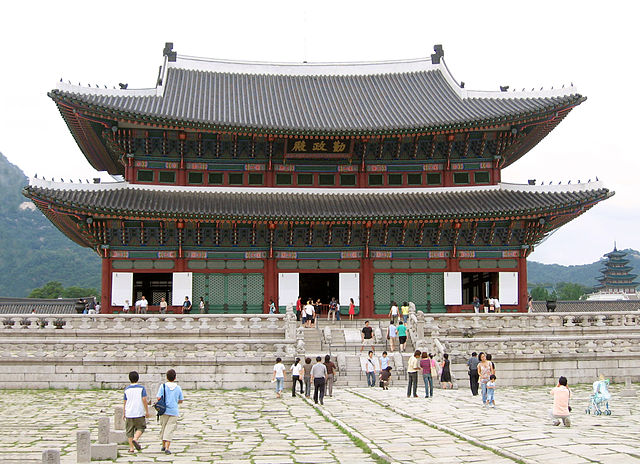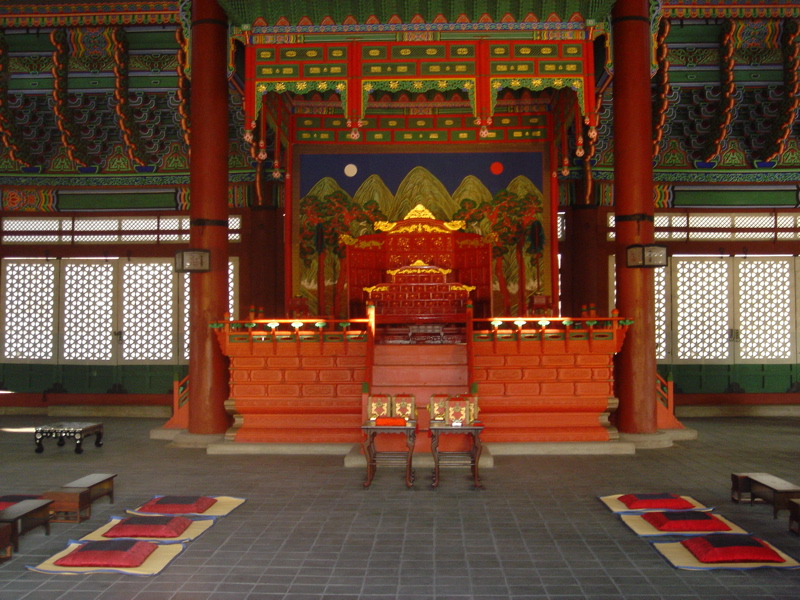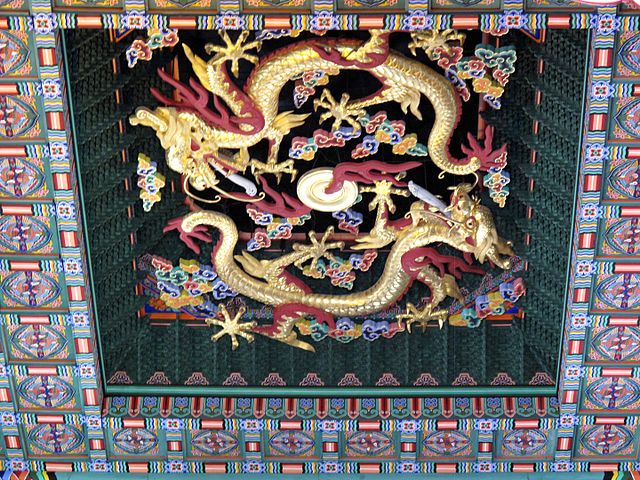
Geunjeong-jeon
Gyeongbokgung Palace
Seoul, Korea
Passing through the inner gate (previous page) one enters the ceremonial courtyard of Geunjeong, the king's throne room (#5 on the palace map). Here is where the most impressive, public, state ceremonies took place such as audiences, proclamations, and receptions of foreign embassies. The double-roofed hall sits atop a two-tiered platform that is detailed with balustrades and animal sculptures. The wooden hall was constructed in 1395, burned down during the Japanese invasion of 1592, and rebuilt in 1867.
As already mentioned, the Ming-dynasty Forbidden City had an overwhelming influence on the design of Gyeongbokgung. This influence extended not only to the architecture and layout of its buildings and courtyards, but also to the cultural patterns of ways in which the palace was used. For example, in the outdoor photograph one can see (photo left corner) some rank stones that designated which officials were to stand where during the ceremonies.
The inside of the hall focuses upon the king's elevated throne, which was of course designed to glorify the dignity of the monarch. Behind the throne is the familiar Joseon royal screen with its sun and moon, five mountains, and pine trees. A concealed door is cut into the screen for the ruler's use. On the ceiling there is a pair of dragons with seven claws, perhaps as a gesture of one-upmanship to the five-clawed Chinese imperial dragon.




